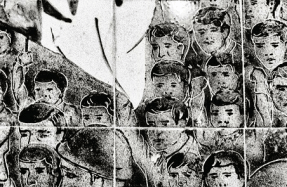Truth & Reconciliation

A visionary legal thinker, Bryan Stevenson has protected the rights of the vulnerable through his work as a death-row lawyer. With the Equal Justice Initiative (EJI), an organization he founded in 1994, Stevenson has made strides to end mass incarceration and challenge racial and economic injustice. He has argued cases before the Supreme Court, recently winning a watershed ruling that mandatory life-without-parole sentences for children seventeen and under are unconstitutional. Stevenson’s 2014 memoir, Just Mercy, recounts his experiences navigating an unfair criminal justice system.
But his work extends beyond the legal realm—Stevenson is invested in shifting cultural narratives and making history visible. This is work to which Harvard professor and art historian Sarah Lewis, guest editor of Aperture’s 2016 “Vision & Justice” issue, is uniquely attuned. Lewis has written at length on the urgent role of art in social justice, on the corrective function of images and how they enable us to reimagine ourselves. Last October, Lewis visited Stevenson at his office in Montgomery, Alabama, for an extended conversation. Central to their discussion were Stevenson’s next projects: on April 26, 2018, he will open the National Memorial for Peace and Justice in Montgomery, which will honor the lives of thousands of African Americans lynched in acts of racial terrorism in the United States, and the Legacy Museum: From Enslavement to Mass Incarceration, which will trace a historical line between slavery, lynching, segregation, and mass incarceration. Of his work, Stevenson remarks, acts of truth telling have a visual component. “If we just go to the public square and people say some words, it doesn’t have the same power.”

Sarah Lewis: It’s a rare privilege to be able to talk with someone doing work in the realm of justice who understands the role of culture for shifting our narratives regarding racial inequality. I want to have a conversation about how culture, specifically photography, has shifted national narratives on rights and race-based justice in the United States.
Bryan Stevenson: Yes.
SL: To begin, I would say that we must consider the journey from 1790 with the Naturalization Act, when citizenship was defined as being white, male, and able to hold property, to the present-day definition of citizenship. The question becomes: Is this journey a legal narrative or is it also a cultural one?
BS: Absolutely.
SL: You’ve spent a lot of time dealing with this history as it relates to emancipation and slavery, up until the current day. How did you arrive at a place of seeing the importance of culture for getting people to understand this work?
: When I first started going
You’re reading a preview, subscribe to read more.
Start your free 30 days





